Terrarium plants are tiny ecosystems that allow you to display a beautiful addition to your home decor while keeping you in touch with nature in the simplest way possible.
Compared to other houseplants, terrariums require much less maintenance and care and can thrive for several years.
You can choose the plants depending on how much care and time you can put into them. For instance, select low-light terrarium plants if you think abundant natural lighting is a constraint in your home.
Or choose succulent plants if you want to grow your terrarium in an open container. But, irrespective of which plants you select, they will routinely require some basic maintenance.
Our guide compiles the common ways to maintain and tend your terrariums and some of the best ways to help them thrive. Continue reading to find out!
Care and Maintenance of Terrarium Plants
Here are a few ways of maintaining your terrarium over time.
1. Check the Water Levels
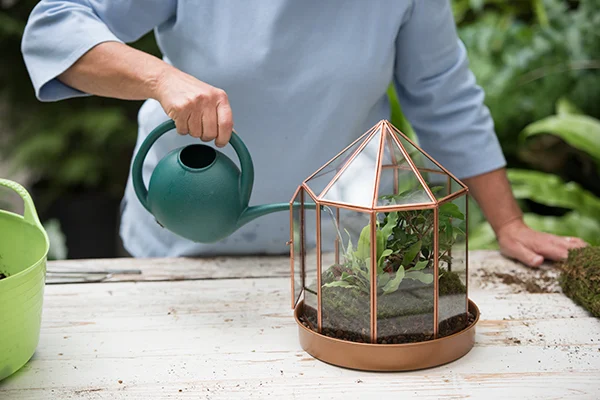
Water is one of the most crucial aspects to consider when caring for any houseplants. Terrariums typically water themselves as long as there’s enough moisture in the system. However, if you water them too much, you have a saturated substrate, which is detrimental to their growth. The most accurate way to check if you’re watering appropriately is to check the condensation. You’ve hit the right spot if the glass container is somewhat fogged up. On the other hand, if there are heavy droplets, you may have gone too far.
2. Optimal Natural Light
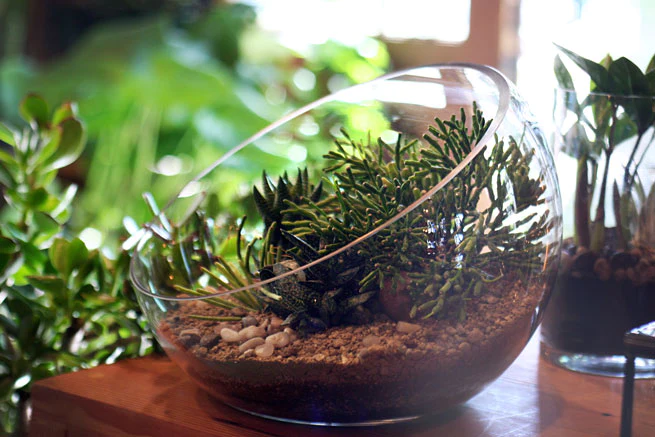
Terrariums, ultimately being houseplants, don’t require too much light. Since the plants are growing in a glass container, direct abundant sunlight can be easily magnified and raise the temperatures inside the jar. This may hinder their growth and even burn the plants. On the other hand, too little light won’t be enough for them to thrive, as, after all, every plant requires sunlight. Thus, you must ensure that your terrarium plants are kept near the windows so they receive enough but not direct sunlight.
3. Keep Those That Belong
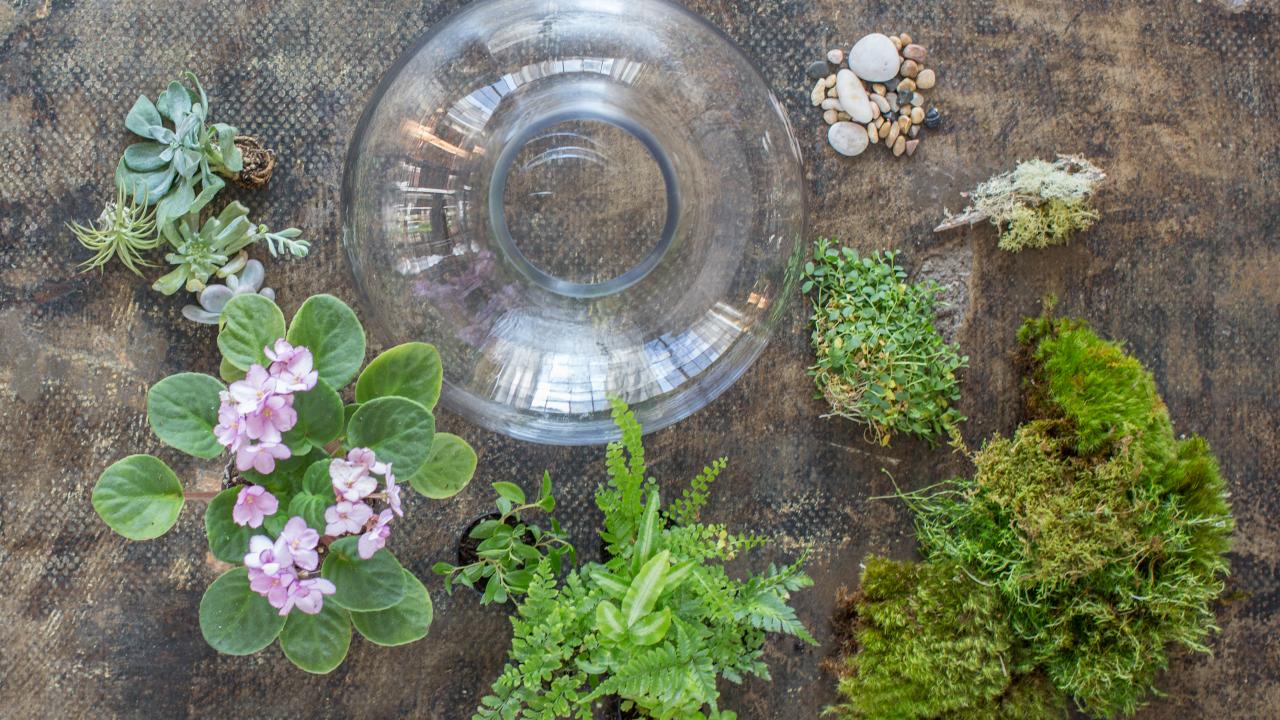
Often, we keep different houseplants or terrariums intact just because they suit the interiors or look good. However, plants aren’t merely a decor item but a living, thriving ecosystem. Thus, check which plants genuinely belong in your terrarium and keep only those. For instance, if your plant is too large for the container, it will fail to grow and also hinder the growth of other smaller plants. If you see a plant that looks like it might be dying, infected, or diseased, you must replace it immediately lest it infect other plants.
4. Keep It Clean
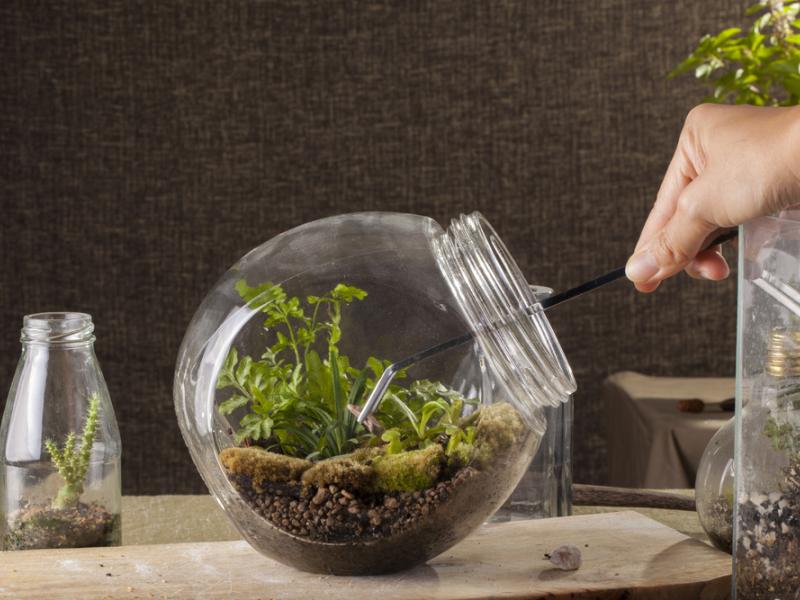
Routine cleaning and dusting of the terrarium must be a priority. If the glass gets too dusty and dirty, it will be tough for your plants to receive sunlight. Dust can also hamper the growth of these plants. Moss is another red alert to look out for. An unnecessary moss invasion can mean the death of your terrariums. While small growth might be unharmful, a large one can have a negative effect. You can remove the moss with the help of Q-tips or remove the lid for a while to contain the excessive growth.
How to Help a Terrarium Thrive?
Once you take note of how to maintain the terrariums over time, learn what you must do to ensure their optimal growth and make your small plantation a success.
1. Positioning
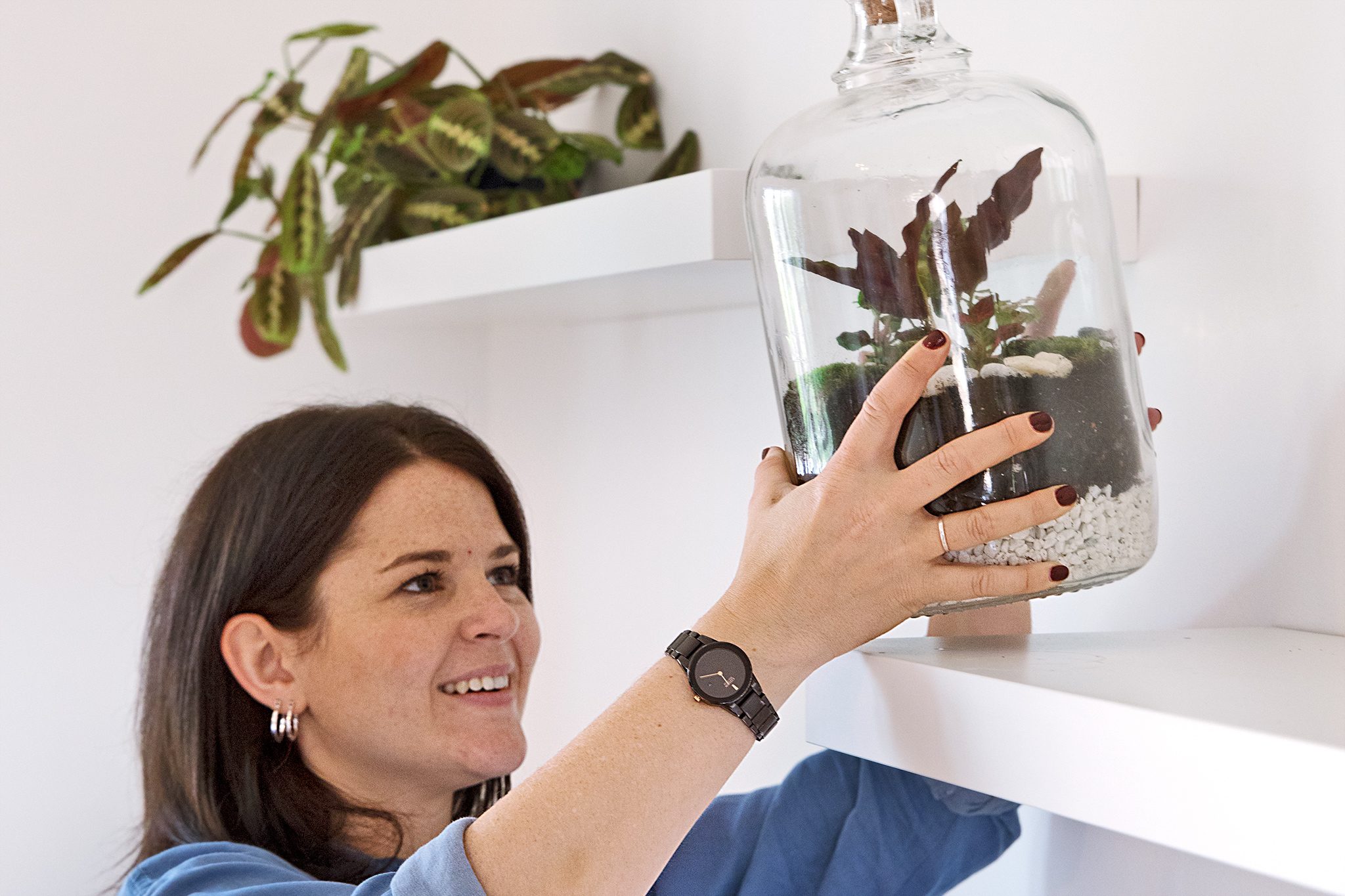
If you have a closed terrarium, it is advisable to keep it in partial sunlight, slightly away from the direct and too much heat, as it may adversely affect the growth of these plants. However, if you have succulent plants in an open terrarium, feel free to keep them in partial or complete sunlight since they require more sunlight as they grow.
2. Watering
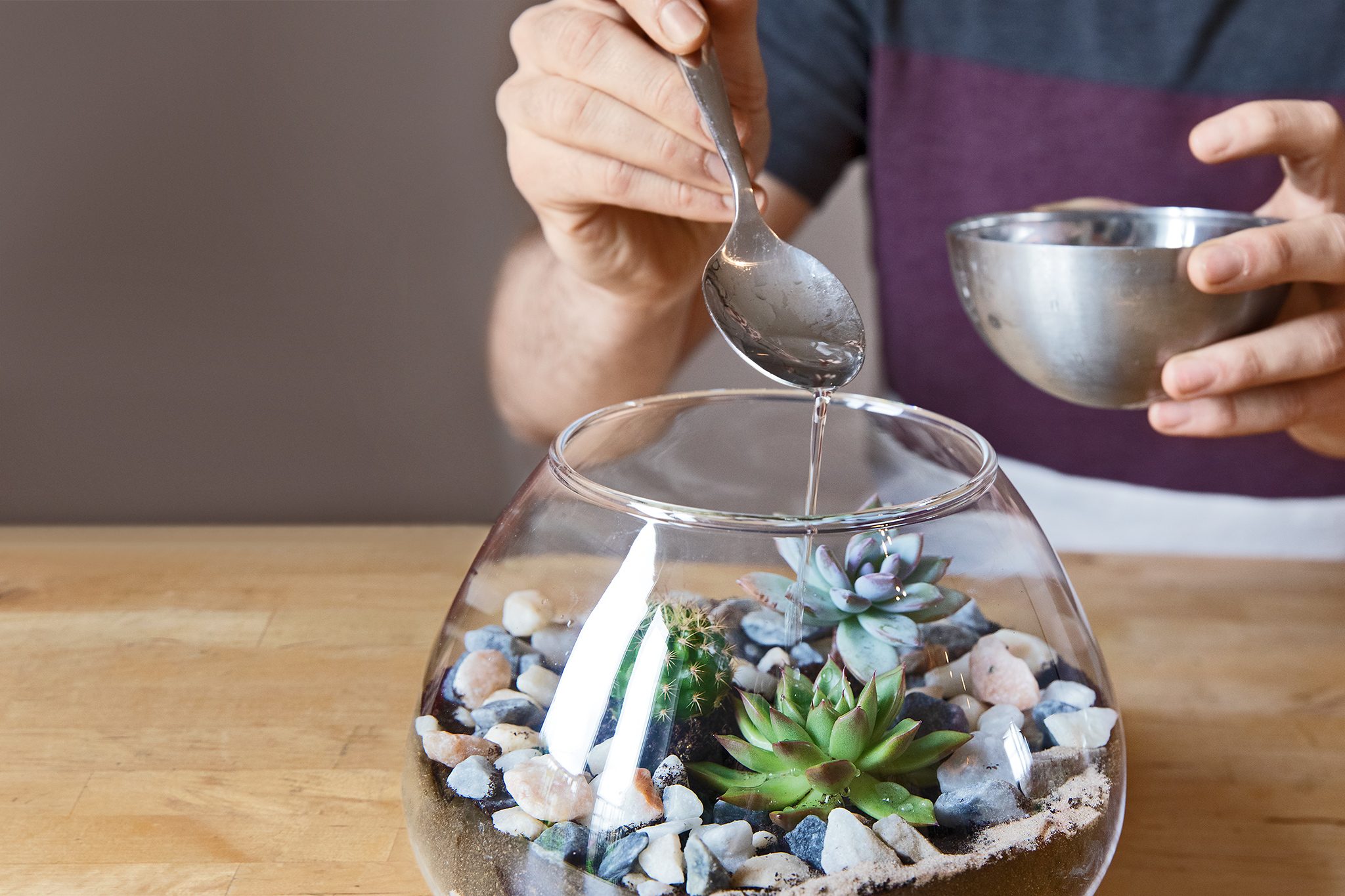
Open terrariums require weekly watering of one small spoonful of water per plant only from March to October. Otherwise, you should water them once every six weeks. Add one tablespoon of water in a closed terrarium if the condensation is too low, or wipe some off if it goes above a third of the jar. Terrariums are otherwise self-watering if the condensation is ideal.
3. Maintaining
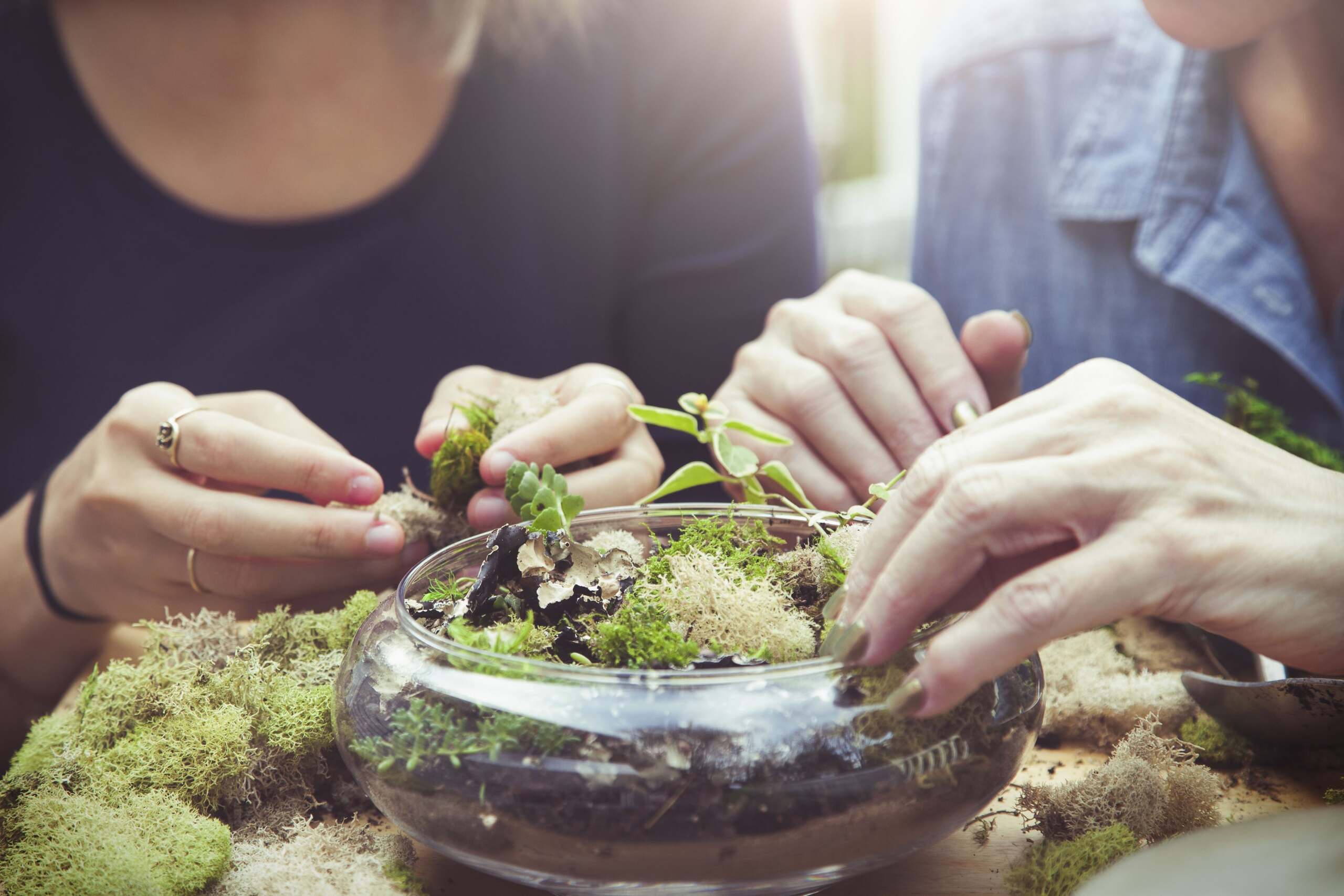
Maintain your plants by trimming them routinely. Use aquatic scissors or tweezers to cut excessive stems and remove moldy leaves or stems. If your plants have begun to turn brown, they’re probably getting too much sunlight and inadequate water. You can fix it by moving them to a slightly darker spot and altering the water levels in the container.
Final Words
As elaborated in our guide, terrariums are quite simple to take care of as long as you can catch the rhythm. Some of the crucial aspects to consider are the water levels, the amount of light they receive, and their regular maintenance.
You can keep these in check by verifying the condensation in closed terrariums, positioning them appropriately, and trimming them regularly. Remove any dying or diseased plants as soon as possible since they may pose a risk to other plants. Ensure the container is clean, dust-free, and void of unnecessary moss so the plants can grow optimally.
Which aspect do you think is most important when caring for terrariums? Let us know in the comments section below!

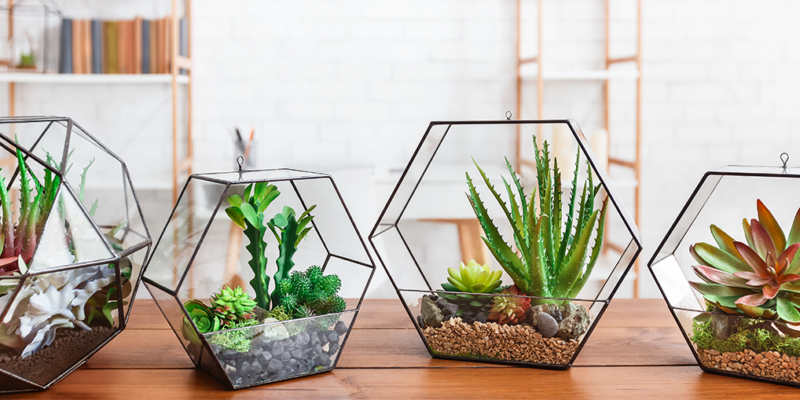

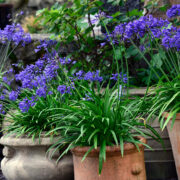
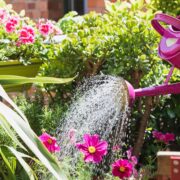
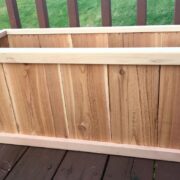
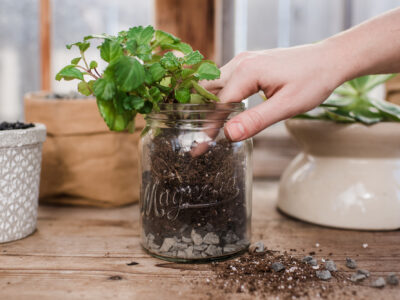
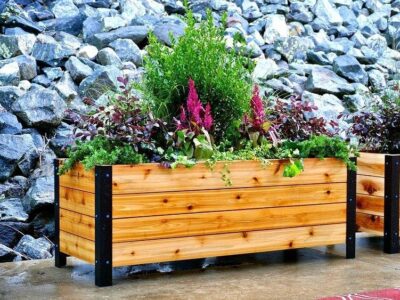
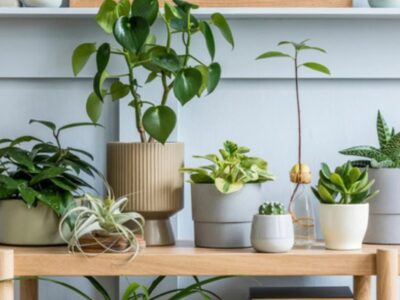
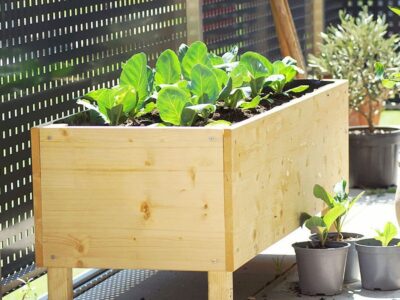
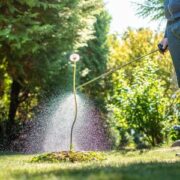

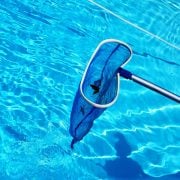

Comments